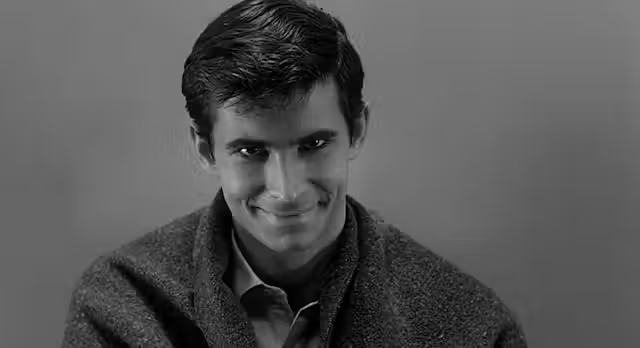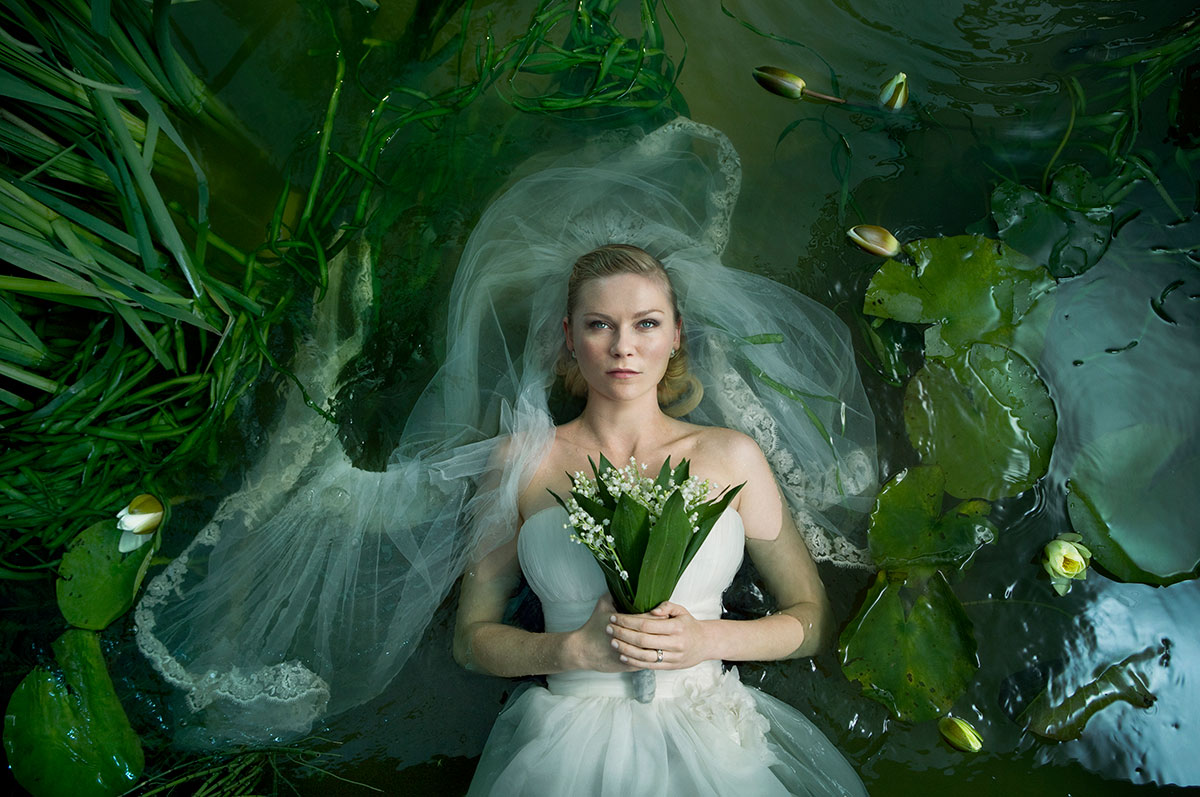In the realm of filmmaking, the constraints of a single location can often lead to some of the most powerful storytelling. Movies set entirely in one room challenge filmmakers to maximize creativity, focusing on dialogue, character dynamics, and psychological tension rather than elaborate sets or action sequences. These films often become a deep exploration of human emotions, relationships, and moral dilemmas, proving that great storytelling doesn’t require extravagant backdrops. In this blog, we’ll delve into some of the best one-room movies that not only captivate audiences but also redefine the boundaries of cinematic storytelling. From thrilling dramas to intense psychological studies, these films demonstrate that sometimes, the most compelling stories unfold within the confines of four walls. Let’s take a closer look!
- EXAM

“Exam” (2009) is a psychological thriller directed by Stuart Hazeldine that dives into the tense and cerebral nature of human behavior under pressure. The film centers around a group of eight candidates who are competing for a prestigious job. They find themselves locked in a sterile room and must complete a mysterious exam with only one question, the nature of which is never revealed to them.
As the candidates grapple with the exam’s enigmatic rules, they quickly realize that their survival and chances of success depend not just on their intelligence but on their ability to navigate the increasingly volatile dynamics among themselves. Tensions rise as paranoia and distrust grow, leading to a gripping exploration of ethics, competition, and the darker sides of ambition.
The film is noted for its minimalist setting and clever twists, making it a thought-provoking watch that keeps viewers guessing until the end. Its unique premise and character-driven narrative have earned it a cult following, appealing to fans of mind-bending thrillers. Overall, “Exam” offers a chilling examination of the lengths to which people will go when pushed to their limits.
- CIRCLE
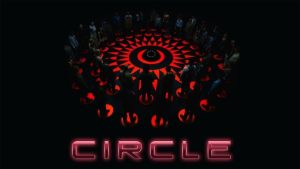
“Circle” (2015) is a psychological thriller directed by Aaron Hann and Mario Miscione that delves into themes of morality and human nature. The film takes place in a mysterious setting where fifty strangers find themselves standing in a circle, faced with a chilling dilemma: they must decide who among them will live and who will die. Every two minutes, the group must eliminate one individual, forcing them to confront their beliefs and values under extreme pressure.
As the tension escalates, the characters grapple with ethical dilemmas, self-preservation instincts, and the dynamics of group decision-making. The film explores how people react when faced with life-or-death choices and highlights the complexities of human relationships in a crisis.
With its minimalist setting and intense character interactions, “Circle” engages viewers in a thought-provoking narrative that challenges them to consider what they would do in a similar situation. The film’s unique premise and moral questions keep audiences captivated, prompting reflection on the nature of humanity and the choices we make.
- SAW

“Saw” (2004) is a groundbreaking horror film directed by James Wan and co-written by Wan and Leigh Whannell. It introduces audiences to a chilling psychological thriller that has since become a cornerstone of the horror genre. The film follows two men who wake up in a grimy, abandoned bathroom, chained to the walls. They soon realize they are part of a twisted game orchestrated by the enigmatic Jigsaw Killer, who places his victims in life-or-death situations to test their will to live.
As the story unfolds, the men must decipher clues and confront their past choices while navigating gruesome challenges. The film masterfully intertwines flashbacks and multiple perspectives, revealing the intricate web of the Jigsaw Killer’s motivations and moral philosophy, which revolves around the idea of appreciating life.
“Saw” is notable for its intense atmosphere, clever plot twists, and graphic imagery, setting a new standard for horror films. It spawned numerous sequels and established a franchise known for its intricate traps and moral dilemmas. With its blend of suspense, psychological tension, and horror, “Saw” remains a significant influence in the genre, captivating audiences and challenging their perceptions of fear and morality.
- REAR WINDOW
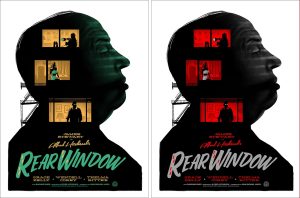
“Rear Window” (1954) is a classic suspense thriller directed by Alfred Hitchcock. This iconic film stars James Stewart as L.B. Jeffries, a wheelchair-bound photographer who becomes obsessed with watching his neighbors through the rear window of his apartment. As he observes their daily lives, he starts to suspect that one of his neighbors may have committed murder.
Set in a single location, the film masterfully builds tension through Jeffries’ perspective, creating a sense of claustrophobia and intrigue. The cinematography emphasizes the limitations of his view, drawing viewers into the mystery while exploring themes of voyeurism and the human instinct to pry into others’ lives.
Grace Kelly co-stars as Jeffries’ girlfriend, who becomes entangled in his investigation. The film’s narrative expertly blends suspense, psychological tension, and social commentary, making it a standout in Hitchcock’s oeuvre.
“Rear Window” is renowned for its meticulous craftsmanship, engaging performances, and iconic score, and it has left a lasting impact on the thriller genre. Its exploration of morality and the ethics of observation continues to resonate with audiences today.
- CONSPIRACY
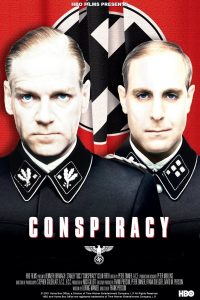
“Conspiracy” (2001) is a historical drama directed by Frank Pierson that centers on the infamous Wannsee Conference, where high-ranking Nazi officials gathered in 1942 to discuss and coordinate the implementation of the Final Solution—the plan to exterminate the Jewish population of Europe.
The film features a powerful ensemble cast, including Kenneth Branagh as Reinhard Heydrich and Stanley Tucci as Adolf Eichmann. It offers a chilling glimpse into the bureaucratic and chillingly methodical nature of the Nazi regime. Through dialogue-driven scenes, the film reveals how ordinary men rationalized their roles in one of history’s darkest chapters, showcasing the disturbing banality of evil.
Set almost entirely within a lavish Berlin villa, “Conspiracy” emphasizes the cold, calculating discussions among the officials, highlighting their chilling detachment from the horrific consequences of their decisions. The film serves as a stark reminder of the capacity for cruelty within a structured system and raises important ethical questions about complicity and moral responsibility.
With its compelling performances and thought-provoking themes, “Conspiracy” offers a poignant exploration of a pivotal moment in history, making it both a gripping and haunting watch.
- IDENTITY
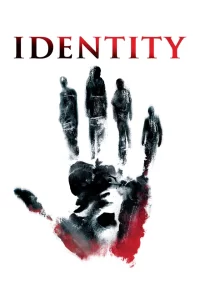
“Identity” (2003) is a psychological thriller directed by James Mangold that masterfully combines elements of suspense, mystery, and horror. The film follows a group of ten strangers who find themselves stranded at a remote motel during a violent rainstorm. As they seek refuge, they begin to realize that they are being systematically murdered, one by one.
The narrative intricately weaves together the characters’ backstories and their connections, revealing deep psychological layers as the tension escalates. As paranoia sets in, each character’s past and motives are examined, leading to shocking twists and revelations.
The film features a strong ensemble cast, including John Cusack, Ray Liotta, Amanda Peet, and Alfred Molina, who deliver compelling performances that enhance the film’s gripping atmosphere. The screenplay, co-written by Michael Cooney, cleverly plays with themes of identity and the human psyche, culminating in an unexpected and thought-provoking conclusion.
“Identity” is notable for its engaging plot, atmospheric tension, and psychological depth, making it a standout in the thriller genre. The film keeps audiences guessing until the very end, raising questions about perception, reality, and the complexities of the human mind.
- 12 ANGRY MEN

“12 Angry Men” (1957) is a classic courtroom drama directed by Sidney Lumet that explores the complexities of justice and human morality. The film takes place almost entirely in a jury deliberation room, where twelve jurors must decide the fate of a young defendant accused of murder. Initially, the majority are convinced of the defendant’s guilt, but as deliberations progress, one juror begins to question the evidence and the reliability of the witnesses.
The film is renowned for its intense dialogue, strong performances, and meticulous character development. Each juror represents different aspects of society, bringing their own biases, experiences, and personalities to the deliberations. The tension builds as the lone dissenting juror works to persuade the others to reconsider their hasty judgments, forcing them to confront their own prejudices and moral responsibilities.
Featuring a stellar cast that includes Henry Fonda, Lee J. Cobb, Ed Begley, and Jack Klugman, “12 Angry Men” is celebrated for its powerful themes of justice, doubt, and the importance of reasonable doubt in the judicial system. The film remains a poignant commentary on the flaws of human nature and the pursuit of truth, making it a timeless piece that resonates with audiences even today. Its influence on both cinema and discussions about justice continues to be felt, solidifying its place as a landmark film in American cinema.
- Interview
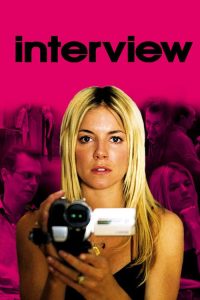
“Interview” (2007) is a provocative drama directed by Steve Buscemi, who also stars in the film alongside Sienna Miller. The story revolves around a seasoned political journalist, Pierre, who is tasked with interviewing a controversial young actress, Katya, following a political scandal.
Set predominantly in a single location, the film explores the dynamics between the two characters as their conversation shifts from formal interview to a more personal and revealing exchange. The tension builds as Pierre’s cynicism clashes with Katya’s youthful naivety, leading to unexpected revelations about their lives, aspirations, and vulnerabilities.
Buscemi’s direction is marked by sharp dialogue and character-driven storytelling, allowing the chemistry between the leads to take center stage. Sienna Miller delivers a compelling performance as Katya, bringing depth to a character often dismissed by the media, while Buscemi’s portrayal of Pierre captures the complexities of a man grappling with his own insecurities and failures.
“Interview” delves into themes of power dynamics, celebrity culture, and the nature of truth in journalism. Its intimate setting and character exploration create a thought-provoking experience that prompts viewers to reflect on the relationships between those in the media and their subjects. The film stands out for its engaging performances and its insightful commentary on the intersections of fame, identity, and the human experience.
- The Mist
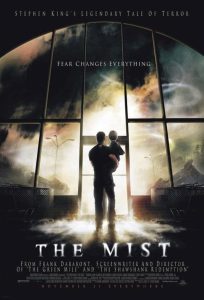
“The Mist” (2007) is a horror film directed by Frank Darabont, based on a novella by Stephen King. The story unfolds in a small town engulfed by a mysterious, thick mist that brings with it terrifying creatures. The narrative follows a group of residents who seek refuge in a local grocery store as they grapple with the escalating chaos outside.
As the mist closes in, tensions rise among the trapped townsfolk, revealing deep-seated fears and prejudices. The film explores themes of human nature, survival, and the fragility of societal order in the face of unimaginable horror. Characters are pushed to their limits, and moral dilemmas arise as the group struggles to determine who they can trust.
With a strong ensemble cast, including Thomas Jane, Marcia Gay Harden, and Laurie Holden, “The Mist” effectively builds suspense and dread through its claustrophobic setting and character dynamics. Darabont’s direction captures both the horror of the creatures lurking outside and the psychological terror brewing within the store.
The film is particularly noted for its dark and thought-provoking ending, which diverges from the typical horror narrative, leaving a lasting impact on viewers. “The Mist” stands out not only as a creature feature but also as a commentary on fear, fanaticism, and the human condition when faced with the unknown.
- Locke
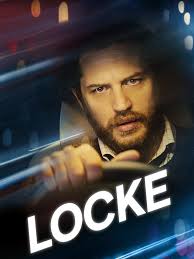
“Locke” (2013) is a gripping drama directed by Steven Knight that takes a unique approach to storytelling, focusing entirely on a single character and a single location: the interior of a car. The film stars Tom Hardy as Ivan Locke, a construction manager whose life unravels over the course of a late-night drive from Birmingham to London.
As Locke navigates the roads, he receives a series of phone calls that reveal the personal and professional crises he is facing. The narrative unfolds in real-time, exposing Locke’s struggles with his responsibilities as a father, husband, and employee. The film explores themes of accountability, morality, and the consequences of choices, all while Locke grapples with the weight of his decisions.
Tom Hardy delivers a powerful performance, carrying the film with his nuanced portrayal of a man under immense pressure. The film’s minimalist approach, featuring no significant action outside the car, heightens the tension and emotional stakes, drawing viewers into Locke’s internal conflict.
“Locke” is notable for its innovative structure and compelling character study, showcasing how a seemingly ordinary situation can lead to profound revelations about identity and responsibility. The film’s ability to create suspense and emotional resonance within such a confined setting makes it a standout piece of contemporary cinema.
- Rope
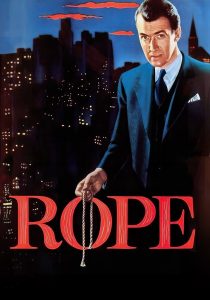
“Rope” (1948) is a suspenseful thriller directed by Alfred Hitchcock, known for its innovative storytelling and cinematic techniques. The film is loosely based on the real-life murder case of Leopold and Loeb and revolves around two young men, Brandon and Phillip, who commit a murder and then host a dinner party with the victim’s body concealed in a trunk.
The film is notable for its unique presentation, filmed in a way that creates the illusion of being shot in a single continuous take. This technique intensifies the sense of claustrophobia and tension as the characters navigate their interactions with their unsuspecting guests, including the victim’s father and former professor, played by James Stewart. The party becomes a psychological game as the killers attempt to maintain their composure while the body lies just beneath the surface of their social façade.
Hitchcock masterfully explores themes of guilt, morality, and the nature of evil. The dialogue-driven narrative emphasizes the psychological manipulation at play, as Brandon, in particular, becomes increasingly arrogant, believing he can outsmart those around him.
“Rope” stands out not only for its technical innovation but also for its exploration of complex moral questions and the chilling portrayal of human behavior. The film remains a significant work in Hitchcock’s filmography and a powerful example of suspense in cinema.
- Red Eye

“Red Eye” (2005) is a suspenseful thriller directed by Wes Craven that masterfully blends elements of horror and psychological tension. The film stars Rachel McAdams as Lisa Reisert, a hotel manager who finds herself in a life-threatening situation during a late-night flight from Dallas to Miami.
While on the plane, Lisa encounters Jackson Rippner, played by Cillian Murphy, a charming yet sinister stranger. As they engage in conversation, Lisa soon realizes that Jackson has sinister intentions: he is plotting to manipulate her into helping him carry out a dangerous assassination scheme that involves her hotel.
The film effectively builds tension through its claustrophobic setting, focusing on Lisa’s attempts to outsmart Jackson while trapped in the confined space of the airplane. Craven expertly crafts a sense of urgency and dread as Lisa must rely on her wits and resourcefulness to escape.
“Red Eye” is notable for its strong performances, particularly from McAdams and Murphy, whose chemistry adds depth to the psychological cat-and-mouse game. The film explores themes of fear, manipulation, and the struggle for control, all while delivering thrilling twists and a fast-paced narrative.
With its sharp writing and engaging plot, “Red Eye” remains a standout thriller that keeps audiences on the edge of their seats from start to finish.
- The Man from Earth

“The Man from Earth” (2007) is a thought-provoking science fiction drama directed by Richard Schenkman. The film unfolds in a single setting, primarily taking place in a professor’s living room during a farewell gathering for John Oldman, played by David Lee Smith. As his friends, a group of academics, come together to bid him goodbye, John reveals an astonishing secret: he claims to be a 14,000-year-old immortal who has lived through significant historical events.
The narrative revolves around the ensuing discussion and debate among the group as they grapple with John’s extraordinary assertion. Each character represents different perspectives—historical, scientific, philosophical, and religious—leading to a rich dialogue that challenges their beliefs and assumptions. The film explores themes of immortality, the nature of existence, and the intersection of history and mythology.
The minimalist setting emphasizes the intellectual discourse, allowing the script and performances to take center stage. The film’s strengths lie in its engaging dialogue and the ethical and existential questions it raises, prompting viewers to reflect on the nature of knowledge, belief, and humanity’s understanding of time.
With its unique premise and compelling character dynamics, “The Man from Earth” is a captivating exploration of ideas that leaves a lasting impact on its audience, making it a notable entry in independent science fiction cinema.
- Panic Room
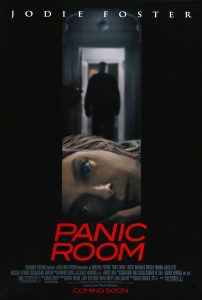
“Panic Room” (2002) is a gripping thriller directed by David Fincher that masterfully combines suspense and psychological tension. The film stars Jodie Foster as Meg Altman, a recently divorced woman who, along with her daughter, becomes trapped in the panic room of their new home during a home invasion.
The story unfolds in real-time as three intruders, played by Forest Whitaker, Dwight Yoakam, and ** Jared Leto**, break into the house in search of a hidden fortune. Meg and her daughter, Sarah, must navigate the terrifying situation from within the panic room, which is designed as a safe haven but quickly becomes a high-stakes battleground.
Fincher’s direction is marked by his signature style, utilizing innovative cinematography and lighting to create a claustrophobic atmosphere. The film explores themes of fear, survival, and the complexities of motherhood, as Meg is determined to protect her child against the intruders’ threats.
With strong performances, particularly from Foster, who delivers a compelling portrayal of a mother pushed to her limits, “Panic Room” keeps audiences on the edge of their seats. The film’s tension and pacing are expertly crafted, making it a standout thriller that examines both the physical and emotional struggles faced in dire circumstances.
- Dial M for Murder

“Dial M for Murder” (1954) is a classic suspense thriller directed by Alfred Hitchcock, known for its intricate plot and masterful tension. The film stars Ray Milland as Tony Wendice, a former tennis champion who plots to murder his wealthy wife, Margot, played by Grace Kelly, in order to inherit her fortune.
The narrative unfolds as Tony meticulously devises a plan to kill Margot, enlisting an accomplice to carry out the crime. However, when the plan goes awry, the story takes unexpected twists and turns, leading to a tense game of cat and mouse. Margot’s resourcefulness and Tony’s increasingly desperate attempts to cover his tracks drive the suspense forward.
Hitchcock’s direction is notable for its careful construction and use of space, as much of the film takes place within a single apartment setting. The dialogue is sharp and engaging, and the film explores themes of betrayal, deception, and the complexity of human relationships.
With its strong performances, particularly from Milland and Kelly, “Dial M for Murder” remains a benchmark in the thriller genre. The film’s blend of psychological tension and clever plotting keeps audiences captivated, showcasing Hitchcock’s ability to create suspenseful narratives that explore the darker aspects of human nature.
- The Method

“The Method” (2007) is a psychological thriller directed by Fernando León de Aranoa that explores the cutthroat world of corporate recruitment. The film follows a group of job applicants who are invited to participate in a high-stakes interview for a prestigious position at a powerful corporation.
As the candidates enter a seemingly standard assessment, they quickly realize that the interview process is far from ordinary. The applicants are subjected to a series of psychological tests and manipulative tactics designed to reveal their true characters and eliminate the competition. Tensions rise as alliances form and betrayals occur, revealing the darker sides of ambition and desperation.
The film delves into themes of morality, ethics, and the lengths to which individuals will go to secure their success. The performances are compelling, with each actor portraying a distinct character whose motivations and secrets come to light as the story unfolds.
“The Method” effectively critiques the ruthless nature of modern corporate culture, showcasing the psychological games that often accompany job recruitment. With its engaging narrative and intense character dynamics, the film invites viewers to reflect on the ethical implications of ambition and the true cost of success.
- Cube

“Cube” (1997) is a Canadian science fiction horror film directed by Vincenzo Natali that has garnered a cult following for its innovative premise and psychological tension. The film centers on a group of strangers who awaken in a mysterious, labyrinthine structure made up of interconnected cubes. Each cube presents its own deadly traps, and the characters must work together to navigate the shifting maze while unraveling the purpose behind their predicament.
The ensemble cast includes Nicole de Boer, Maurice Dean Wint, David Hewlitt, and Andrew Miller, each portraying diverse characters with varying skills and backgrounds. As they confront their fears and suspicions, interpersonal conflicts arise, highlighting themes of trust, survival, and the human psyche under pressure.
The minimalist setting and unique cinematography enhance the claustrophobic atmosphere, immersing viewers in a sense of dread and uncertainty. “Cube” raises questions about fate, free will, and the nature of existence, making it a thought-provoking experience that lingers long after the credits roll.
With its innovative concept, psychological depth, and intense atmosphere, “Cube” remains a standout entry in the horror and science fiction genres, influencing subsequent works and inspiring discussions about its underlying themes.
- Buried
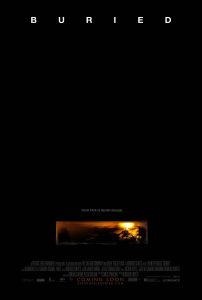
“Buried” (2010) is a gripping psychological thriller directed by Rodrigo Cortés that presents an intense and claustrophobic experience. The film stars Ryan Reynolds as Paul Conroy, a truck driver who wakes up to find himself trapped in a wooden coffin buried underground, with only a lighter and a cell phone.
As Paul struggles to escape, the film unfolds in real-time, immersing viewers in his harrowing situation. The story delves into his desperate attempts to communicate with the outside world and secure his release, all while racing against time as oxygen depletes. The film effectively uses its confined setting to heighten tension and evoke feelings of isolation and despair.
Reynolds delivers a powerful performance, capturing the character’s escalating panic and determination. The screenplay explores themes of survival, fear, and the human spirit in the face of overwhelming odds, prompting viewers to consider the fragility of life and the will to survive.
“Buried” is notable for its minimalistic approach, relying heavily on Reynolds’ performance and clever direction to create a sense of urgency and claustrophobia. With its unique premise and intense atmosphere, the film stands out as a thought-provoking and unsettling exploration of fear and resilience.
- Symbol

“Symbol” (2009) is a surreal fantasy film directed by Hitoshi Matsumoto, known for its unique blend of comedy and existential themes. The film unfolds through two parallel narratives: one follows a man named Masaru, who finds himself trapped in a mysterious room filled with strange symbols and objects, while the other depicts a series of whimsical and bizarre scenarios in a separate world.
As Masaru navigates his confined space, he must interact with various objects that take on different meanings and functions, leading to a series of surreal and often humorous situations. The film explores themes of communication, the search for meaning, and the nature of existence, all delivered with Matsumoto’s signature absurdity.
The visuals are striking, combining imaginative set design with a playful approach to storytelling. The film’s humor is both quirky and thought-provoking, inviting viewers to reflect on the absurdities of life and the connections we forge with others.
“Symbol” stands out for its originality and inventive narrative structure, challenging conventional storytelling while providing a captivating experience. Its blend of humor, philosophy, and surrealism makes it a unique entry in contemporary cinema, appealing to those who enjoy films that push the boundaries of traditional narratives.


